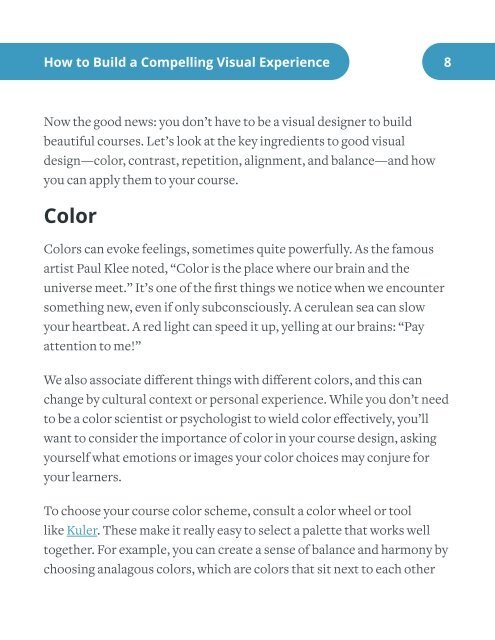Articulate_5_Highly_Effective_Strategies_for_Creating_Engaging_E-Learning_v7
You also want an ePaper? Increase the reach of your titles
YUMPU automatically turns print PDFs into web optimized ePapers that Google loves.
Title How to Build a Compelling Visual Experience 8<br />
Now the good news: you don’t have to be a visual designer to build<br />
beautiful courses. Let’s look at the key ingredients to good visual<br />
design—color, contrast, repetition, alignment, and balance—and how<br />
you can apply them to your course.<br />
Color<br />
Colors can evoke feelings, sometimes quite powerfully. As the famous<br />
artist Paul Klee noted, “Color is the place where our brain and the<br />
universe meet.” It’s one of the first things we notice when we encounter<br />
something new, even if only subconsciously. A cerulean sea can slow<br />
your heartbeat. A red light can speed it up, yelling at our brains: “Pay<br />
attention to me!”<br />
We also associate different things with different colors, and this can<br />
change by cultural context or personal experience. While you don’t need<br />
to be a color scientist or psychologist to wield color effectively, you’ll<br />
want to consider the importance of color in your course design, asking<br />
yourself what emotions or images your color choices may conjure <strong>for</strong><br />
your learners.<br />
To choose your course color scheme, consult a color wheel or tool<br />
like Kuler. These make it really easy to select a palette that works well<br />
together. For example, you can create a sense of balance and harmony by<br />
choosing analagous colors, which are colors that sit next to each other


